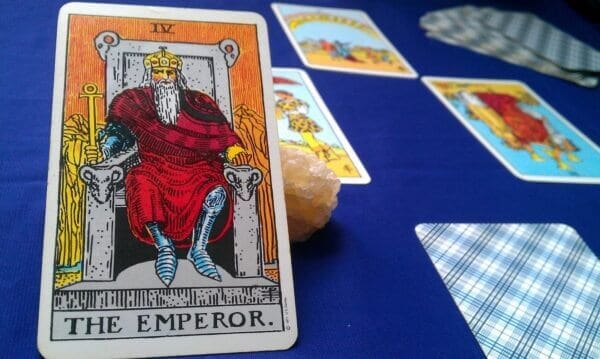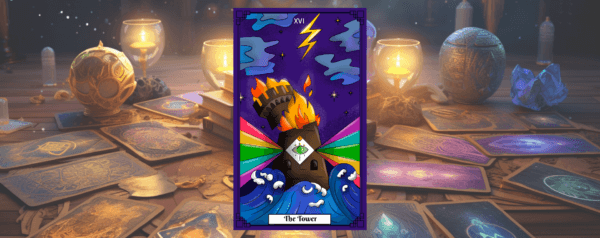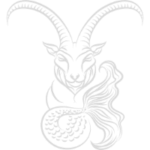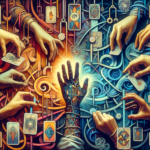Unlocking Inner Wisdom: Tarot and Meditation

In recent years, the advantages of meditation for our emotional health and intuitive potential have gained increased attention. Nevertheless, some individuals struggle to remain calm and focused due to a racing mind. If you experience anxiety or restlessness during meditation attempts or while trying to establish a routine, you are not the only one. It's natural to feel that meditation, with its silent and motionless nature, might seem uninteresting.
However, meditation possesses remarkable healing properties. It serves to soothe our nerves, foster optimistic thoughts, dispel negativity, alleviate stress, regulate anxiety, enhance our focus, encourage kindness and empathy, and reinforce self-awareness and confidence, among numerous other advantages. Meditation revolves around the practice of mindfulness, which greatly contributes to enhancing various facets of our lives.
Metaphysical instruments, such as Astrology, Numerology, and Tarot, benefit numerous facets of our lives. However, many individuals overlook the way these tools can amplify other practices and rituals, including meditation. A harmonious, interdependent connection exists among the metaphysical gems we utilize – each crystal possesses an astrological sign association, every Tarot card symbolizes a zodiac sign, Tarot cards correspond with specific crystals, and the list goes on.
The meditation experience can be significantly enriched by employing these metaphysical tools, with Tarot cards being an especially effective means to foster serene meditation.
Curious about the connection? Keep reading to discover how tarot is transforming meditation into a more engaging and efficient practice.
Understanding Tarot Fundamentals
For those unacquainted with Tarot cards, the intricately designed decks may appear daunting, or even reserved exclusively for seasoned witches and psychic practitioners. Although Tarot has deep roots in the mystical realm, its use is by no means limited to specific individuals. Tarot can prove beneficial to anyone seeking answers or guidance.
Although certain individuals, such as psychics or mediums, utilize Tarot cards to establish connections with external guidance like angels, spirit guides, or higher powers, the majority of Tarot-related rituals are performed by ordinary people in search of wisdom and insight from their own inner reservoir of knowledge.
Often, life's distractions can hinder our ability to perceive our own intuitive voice. Tarot cards serve as conduits, linking our conscious thoughts to our innate gut instincts.
Conventionally, Tarot decks comprise 78 cards – 22 Major Arcana cards and 56 Minor Arcana cards – which vary in shape, size, color, and design. Selecting a deck is a highly individual and customizable experience, given the vast array of choices available.
Various methods exist for reading Tarot cards, and countless resources elucidate their detailed usage. Frequently, decks include guidebooks that offer comprehensive explanations for each card and propose diverse spreads and techniques. The paramount factor in all Tarot-related activities is forging connections with your emotions and instincts, as the objective is for you to intuitively discern which cards to draw and subsequently derive meaning and guidance from them.
Integrating Tarot Cards into Meditation
For those who are novices in Tarot or meditation, the following suggestions can assist in familiarizing yourself with both techniques and inspire the development of personalized rituals.
An effective starting point for establishing a Tarot meditation routine is to draw one card daily that resonates with you. Some individuals prefer letting their right hand (the "receptive" hand) hover over their deck until they sense warmth or energy from a card. Others opt for a random card selection. The goal is to foster your own unique connection and customs with your cards, as the experience is profoundly personal and centered on connecting with your inner guidance system.
After selecting your card, research its meaning and associated message. Examine the imagery and related elements. Endeavor to absorb the sensations evoked by the card and process the information it encapsulates. Subsequently, dedicate some time to genuinely contemplate the theme presented to you.
You may choose to sit in silence or accompanied by soothing music, reflecting on the message and its significance in your life. Alternatively, you could write your thoughts and emotions in a journal or create artwork that embodies the card and its impact on you. The primary aim is to cultivate mindfulness and concentration.
As traditional meditation might appear daunting to newcomers, this approach fosters a more accessible form of mindfulness and meditation. It appeals to a wider audience, helping them ease into the practice before fully immersing themselves. Additionally, it enables you to form a deeper connection with your tarot deck in novel and captivating ways, even for seasoned users of the cards.
Your meditation practice need not be restricted to a single deck. Experiment by drawing one card from each of your favorite decks during an hour-long session or select multiple cards from the same deck. This approach not only cultivates mindfulness and focus but also enhances intuition and deepens your connection with yourself – qualities that Tarot inherently fosters.
Final Reflections…
Countless methods exist for employing Tarot to enhance mindfulness and foster a meditative state, allowing you to be imaginative in crafting your personal ritual. Consider incorporating incense or smudged herbs into your Tarot-meditation routine. Illuminate your space with candles and display your cherished crystals.
Regardless of how you decide to dedicate your attention to the message and significance of a Tarot card, you will likely notice an increased sense of relaxation, a stronger connection to yourself, and improved mental clarity in a short period of time.
Associated Article: Top 5 Tarot Spreads & Their Applications






























